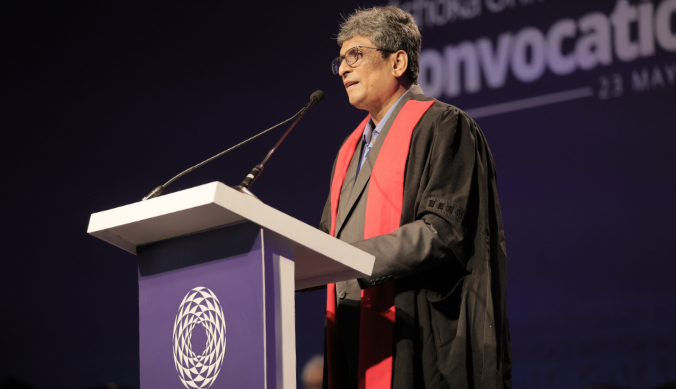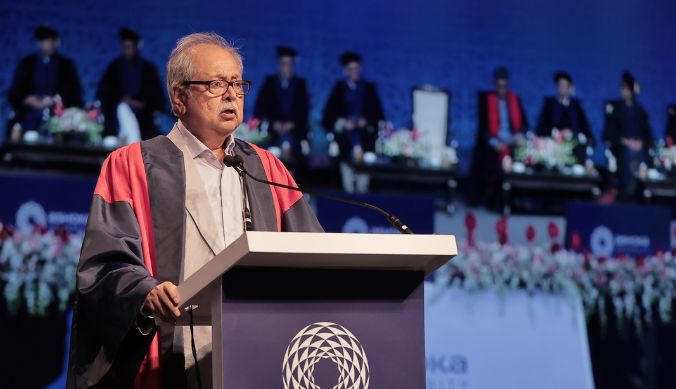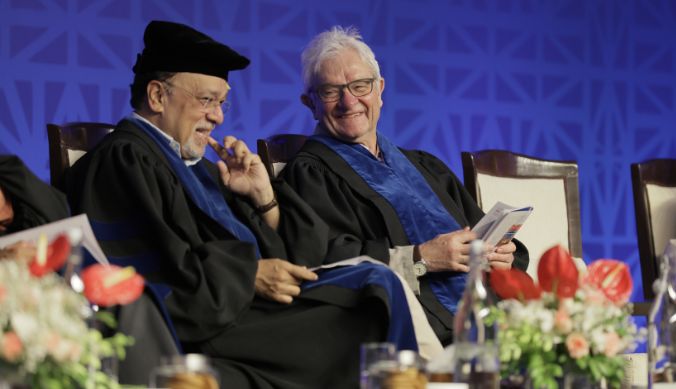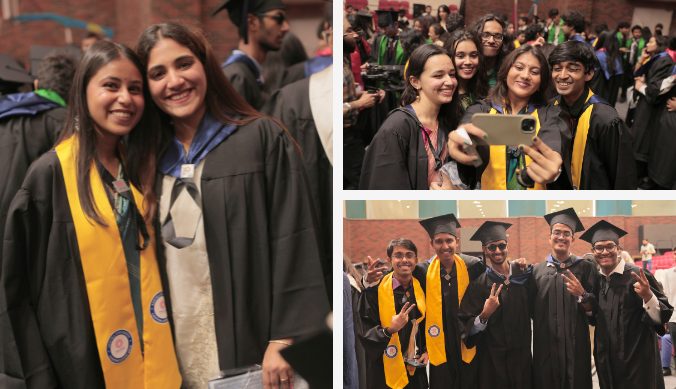“Learning About Nature Should Feel Like Being Part of It, Not Just Reading About It”
An interactive outreach session led by Professor Manvi Sharma brought Ashoka students and young learners in Asawarpur together for a joyful, game-based exploration of birds and nature.
That idea shaped the outreach session organised by Dr Manvi Sharma from Ashoka University’s Environmental Studies Department. Held at the government primary school in Asawarpur, the session brought together 15 fifth-grade students from the Primary School, six Ashoka undergraduates, and Graduate Assistant Satyam Gupta for a nature-based, game-based learning experience centred around birds and their habitats.
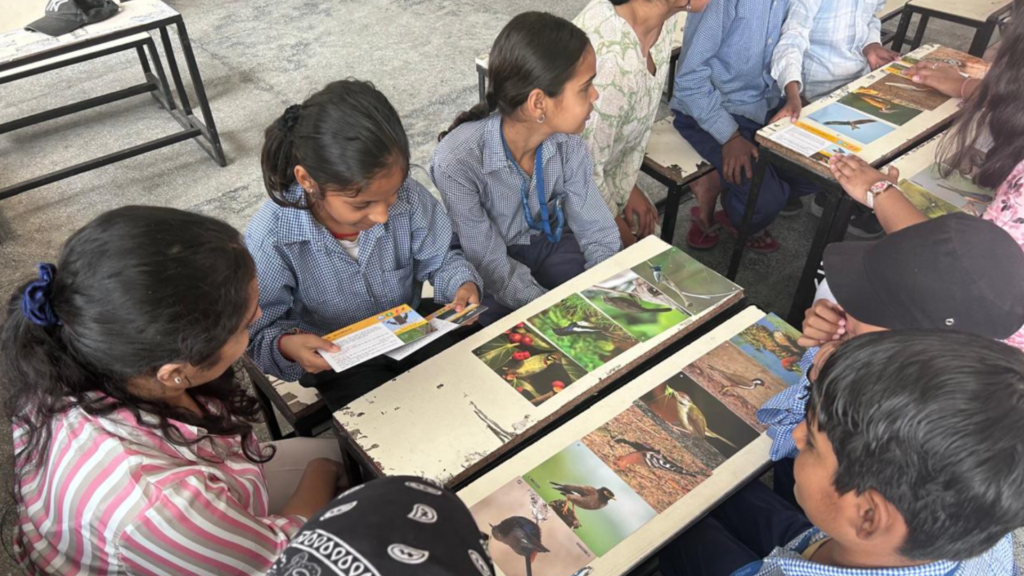
Right from the start, the energy in the room was palpable. We began with introductions, asking each student to share their name and favourite animal or bird. That one simple prompt opened up the room, and suddenly we were talking about tigers, peacocks, owls, and, of course, crows. The children’s enthusiasm set the stage for a session rooted in curiosity and exploration, everything that nature-based learning hopes to spark.
What followed was a session on birds, led by Dr Sharma, that blended facts with conversation. The children were introduced to different birds, their habitats, and what they eat, not through textbooks but through an open, interactive exchange. Their responses were full of imagination, at times wildly inventive, and at times, impressively accurate.
To bring the ideas to life, we played two games. The first, Sach ya Jhoot, was a simple true-or-false game, except it involved a lot of running. Statements about birds were read aloud, and students had to sprint to the side of the room that stood for “truth” or “lie.” The room filled with laughter, and even the quieter children found themselves running confidently, trusting their instincts.
The second activity was a memory game using bird flashcards. The children were divided into three teams, each taking turns to flip over cards in search of pairs, birds that shared either the same habitat or food preference. Beyond the rules, what stood out was the collaboration. Children discussed strategies, remembered details, and cheered for each other. They didn’t just compete, they connected.
But the purpose of this session stretched beyond birds. One of our key aims was to encourage mixed-gender teamwork and communication, something not always emphasised in traditional classroom environments. We wanted to create a safe, exciting space where boys and girls would interact equally, solve problems together, and express themselves freely.
For many of us from Ashoka, it was our first time in a primary school classroom in Sonipat. We expected to teach, but in many ways, we learned more. We saw what genuine curiosity looks like, how science becomes accessible when it’s fun, and how even a short interaction can spark confidence.
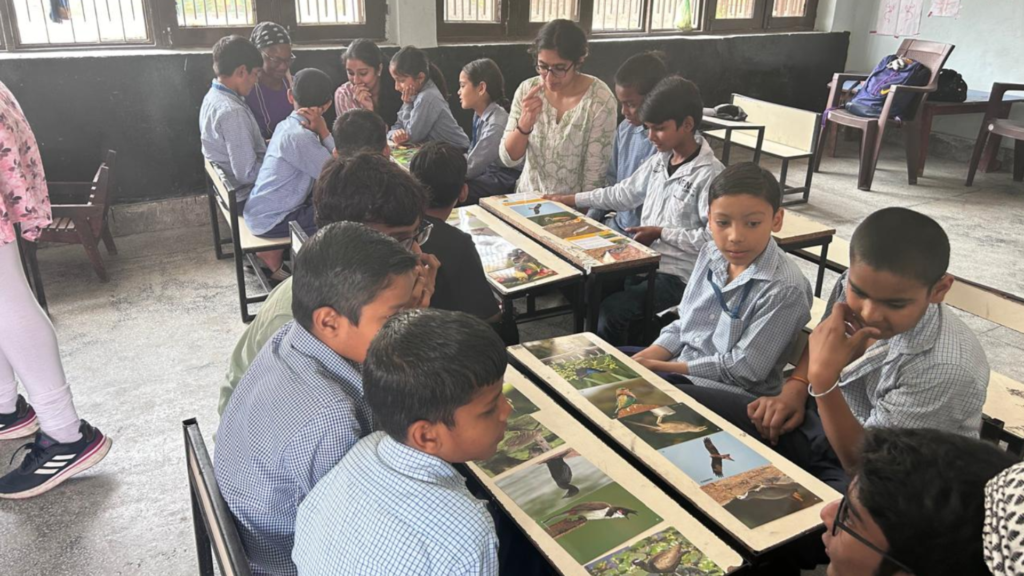
“It was an amazing experience to interact with the students at the primary school in Asawarpur. Going in, I was sceptical about whether they would be interested at all in learning about birds, but to my pleasant surprise, we were all met with immense curiosity and warmth by the students. We played a game with a deck of bird flash cards, which were in both Hindi and English, where they learned about the different habitats and the diets of birds found around us. It was incredible to see them connect this information about birds with their lived experiences in the village from the encounters they had with the fauna around them. The students listed the birds they knew at the start, which included pigeons, crows, peacocks and parrots. Through the game, they were able to learn the names of the other familiar birds in their environment in Hindi and in English as well. In the end, they learned the names of other birds, such as that of a Red-wattled Lapwing, which one of the students recalled seeing in the fields that surrounded them. Professor Manvi Sharma gave learning charts to the teacher to aid the students’ learning about birds and further introduce them to ornithology beyond this visit. Overall, it was a great learning experience for me as a student to interact with my immediate environment and help introduce the world of birds to primary school students.” – VG Layasree, UG 2024
This outreach wasn’t a one-way transfer of knowledge. It was a shared experience: a moment where our academic lives briefly folded into the everyday reality of young students just beginning to discover the world around them.
Somewhere between the bird calls, the mismatched flashcards, and the laughter, we were all reminded why environmental education matters. Not just because it teaches facts, but because it makes space for wonder.
– Written by Ananya Kallury (UG 2024)
Study at Ashoka








